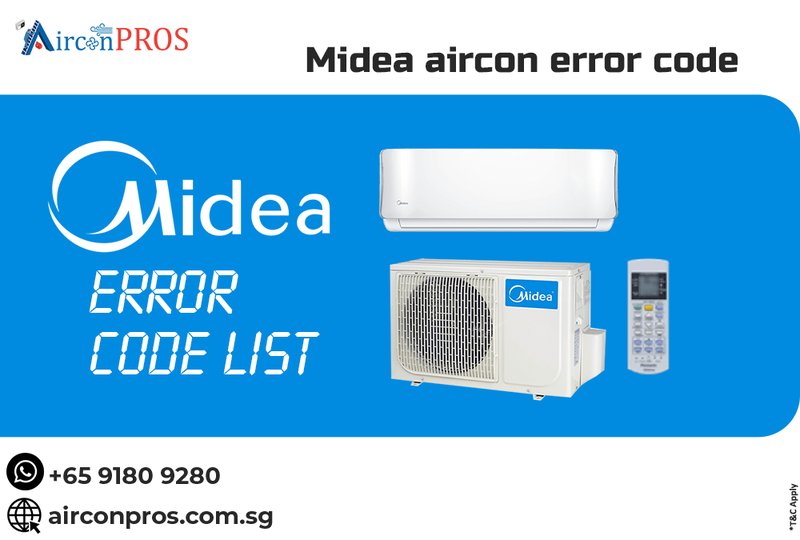
So, let’s break it down a bit: “Error Code UE” is a signal from your air conditioner that something isn’t quite right. Think of it as your unit’s way of waving a little red flag, saying, “Hey, I need some attention!” But don’t panic. Just like with a car’s warning light, not every error code spells disaster. Instead, it’s an opportunity to understand your unit better and figure out the best way to get it working perfectly again. Let’s dive deeper into what this code means and how you can address it.
Understanding Error Code UE
First things first, what is Error Code UE all about? In the world of air conditioners, particularly for brands like Midea, error codes are a way of identifying specific issues. The “UE” code generally hints at a problem related to the unit’s voltage or electrical system. Imagine your air conditioner as a sophisticated orchestra, where every instrument must play in harmony. If one musician misses a beat, everything sounds off—and this is similar to an electrical issue triggering an error code.
Now, why does this happen? Voltage-related issues might occur if there’s a sudden fluctuation in the electricity supply to your neighborhood. For example, it could be like a hiccup in the power flow, disturbing your air conditioner’s rhythm. Alternatively, it might also be due to internal components of the air conditioner, like the power supply board, facing some troubles. This is a more technical aspect, akin to a musician’s instrument needing fine-tuning by a professional.
Understanding this, your initial step is to determine if the issue stems from an external source or within the device itself. You can start by checking your home’s main electricity supply. Maybe there’s a general power problem; if that’s the case, contacting your local electricity provider could solve it. If everything seems normal with the power supply, it’s time to consider internal issues, which might require a technician’s expertise.
When to Attempt DIY Solutions
Before you speed-dial a technician, there are a few things you might want to try at home. You’ll be surprised how often simple solutions can resolve what initially seems like a complex problem. Like when you reset a finicky router or reboot an unresponsive phone, sometimes your air conditioner just needs a little reset to get back on track.
Here’s the deal: begin by turning off your air conditioner and unplugging it from the power source. Wait a couple of minutes—this allows the unit to reset. Think of it as giving your air conditioner a chance to “breathe” and clear out any temporary glitches in its system. After the wait, plug it back in and turn it on to see if the error code persists.
Additionally, you might want to check your air conditioner’s filters and vents. Dust and debris can sometimes cause operational issues, leading to false error codes. Cleaning these components not only helps the unit run more efficiently but can also prevent minor issues from escalating into major problems. However, if after these attempts the UE code is still taunting you, it might be time to seek professional help.
Signs It’s Time to Call a Technician
Sometimes, despite our best efforts, certain tasks require a professional touch. So, when should you call a technician for a UE error code? If resetting the unit and cleaning its filters don’t do the trick, there could be deeper electrical issues at play. Think of a technician as a doctor for your air conditioner, someone with the skills and tools to diagnose and treat the problem.
If your unit keeps displaying the error code or has started behaving erratically—like inconsistent cooling, unusual noises, or frequent shut-offs—these are clear signals that something isn’t right. Persistent problems suggest there might be an underlying issue that only a trained eye can spot. Not addressing these could result in more extensive damage, just like ignoring that odd noise in your car can lead to a hefty repair bill.
Moreover, handling electrical parts can be risky without the proper knowledge or equipment. Electricity is potent—like a strong river current—and it’s always safer to let the experts wade in and handle it. A certified technician will not only resolve the error but also ensure your unit is in top shape, safeguarding against future issues. If your attempts haven’t resolved the problem, it’s best to rely on their expertise.
Ensuring Long-Term Air Conditioner Health
Once you’ve navigated through the maze of error codes and technician visits, it’s important to think about the future. How can you ensure your Midea air conditioner remains in good health and avoid seeing that UE error code again? Preventative measures can go a long way in maintaining your unit’s efficiency and lifespan.
Regular maintenance is like keeping up with health check-ups, ensuring everything runs smoothly. Schedule routine inspections with a trusted technician who can spot potential problems before they become serious issues. This regular attention keeps the components clean and well-functioning, akin to tuning a musical instrument.
Additionally, consider investing in a surge protector for your air conditioner. It acts as a safety net against voltage fluctuations, protecting your unit from unexpected power surges. This simple addition can save your air conditioner from future hiccups and help maintain a consistent flow of electricity.
And finally, develop a habit of monitoring your air conditioner’s performance. If you notice anything out of the ordinary, like reduced cooling efficiency or increased energy bills, don’t ignore these signs. Address any abnormalities as soon as they arise to keep your air conditioner—and your comfort—intact.
In conclusion, while seeing an error code might initially be intimidating, understanding and addressing it doesn’t have to be. By following these steps and knowing when to call in the experts, you can ensure your Midea air conditioner keeps you cool without a hitch.